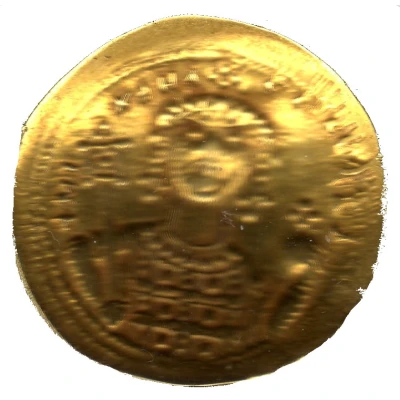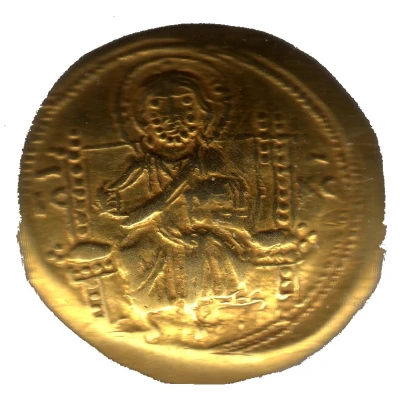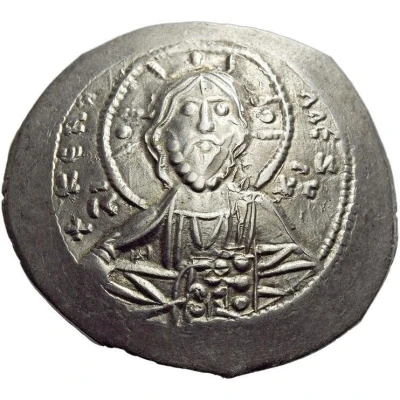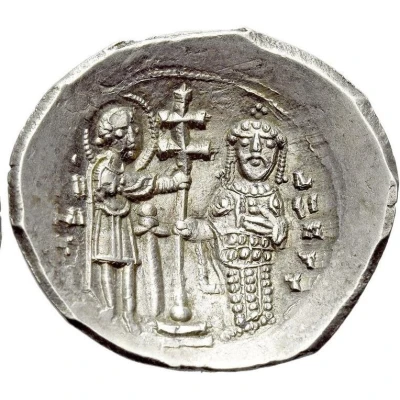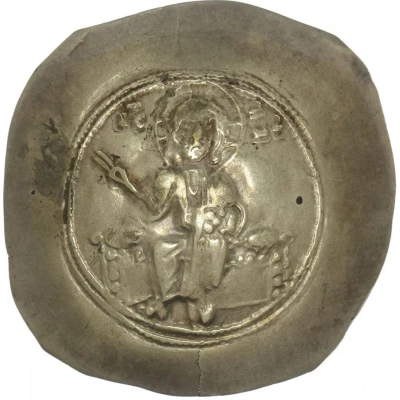
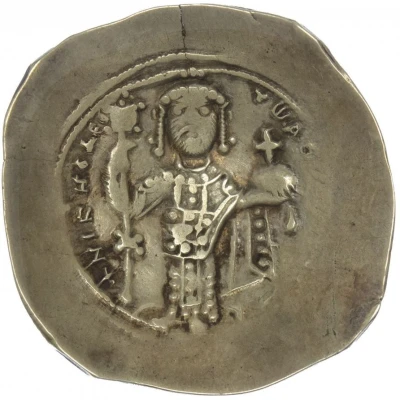

© HerveMonaco (CC BY-NC-SA)
Histamenon nomisma - Nicéphore III Botaniatès ND
| Electrum | 4.27 g | 28 mm |
| Issuer | Byzantine Empire (Byzantine states) |
|---|---|
| Emperor | Nikephoros III Botaneiates (1078-1081) |
| Type | Standard circulation coin |
| Years | 1078-1081 |
| Value | Histamenon (1) |
| Currency | Second Solidus Nomisma (720-1092) |
| Composition | Electrum |
| Weight | 4.27 g |
| Diameter | 28 mm |
| Shape | Concave |
| Technique | Hammered (scyphate) |
| Orientation | Variable alignment ↺ |
| Demonetized | Yes |
| Updated | 2024-10-04 |
| Numista | N#362867 |
|---|---|
| Rarity index | 100% |
Reverse
Nicephorus III crowned, standing frontally on a base, wearing a loros, holding a crossed labarum in his right hand and a cruciger globe in his left, surrounded by a double grenetis.
Script: Latin
Lettering: + NIKHF DESP- Tw ROTANIAT
Translation: Nicephoros III
Comment
NICÉPHORE III BOTANIATES reigned from 03/24/1078 to 04/04/1081.In early 1078, Nicephorus Botaniates, general of the Byzantine army, revolted against Michael VII, who promptly abdicated and retired to a monastery. Nicephorus III lived with Michael's wife Marie. From the start of his reign, Nicephorus III had to contend with several revolts, including those of Nicephorus Basilacius and Nicephorus Melissenus. Alexis Comnenus, Nicephorus III Botaniates' most capable general and Nicephorus Melissenus' brother-in-law, marched on Constantinople, which opened its gates to him without a fight. In 1081, Nicephorus III abdicated and retired to a monastery.
Interesting fact
One interesting fact about the Histamenon nomisma coin is that it was made of electrum, a rare and valuable metal alloy that was highly prized in ancient times for its durability and aesthetic appeal. Electrum is a naturally occurring alloy of gold and silver, and it was used to mint coins that were both beautiful and durable. The use of electrum in the production of coins like the Histamenon nomisma coin reflects the advanced metallurgical techniques and craftsmanship of the Byzantine Empire during the 11th century.
